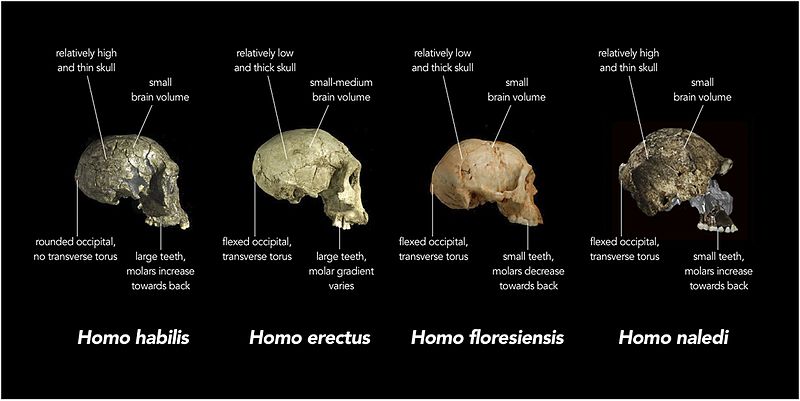Archivo:Comparison of skull features of Homo naledi and other early human species.jpg

Tamaño de esta previsualización: 800 × 401 píxeles. Otras resoluciones: 320 × 160 píxeles · 640 × 321 píxeles · 1024 × 513 píxeles · 1280 × 641 píxeles · 2560 × 1283 píxeles · 4473 × 2241 píxeles.
Ver la imagen en su resolución original (4473 × 2241 píxeles; tamaño de archivo: 382 kB; tipo MIME: image/jpeg)
Historial del archivo
Haz clic sobre una fecha y hora para ver el archivo tal como apareció en ese momento.
| Fecha y hora | Miniatura | Dimensiones | Usuario | Comentario | |
|---|---|---|---|---|---|
| actual | 00:58 12 sep 2015 |  | 4473 × 2241 (382 kB) | Animalparty | User created page with UploadWizard |
Usos del archivo
La siguiente página usa este archivo:
Uso global del archivo
Las wikis siguientes utilizan este archivo:
- Uso en arz.wikipedia.org
- Uso en ast.wikipedia.org
- Uso en az.wikipedia.org
- Uso en bg.wikipedia.org
- Uso en ca.wikipedia.org
- Uso en ceb.wikipedia.org
- Uso en de.wikipedia.org
- Uso en en.wikipedia.org
- Uso en eu.wikipedia.org
- Uso en fr.wikipedia.org
- Uso en ga.wikipedia.org
- Uso en he.wikipedia.org
- Uso en hr.wikipedia.org
- Uso en ia.wikipedia.org
- Uso en id.wikipedia.org
- Uso en ja.wikipedia.org
- Uso en kab.wikipedia.org
- Uso en ka.wikipedia.org
- Uso en kn.wikipedia.org
- Uso en nl.wikipedia.org
- Uso en nn.wikipedia.org
- Uso en no.wikipedia.org
- Uso en oc.wikipedia.org
- Uso en pl.wikibooks.org
- Uso en pt.wikipedia.org
- Uso en ro.wikipedia.org
- Uso en simple.wikipedia.org
- Uso en species.wikimedia.org
- Uso en sv.wikipedia.org
- Uso en tr.wikipedia.org
- Uso en uk.wikipedia.org
- Uso en ur.wikipedia.org
- Uso en vi.wikipedia.org
- Uso en vls.wikipedia.org
- Uso en www.wikidata.org
